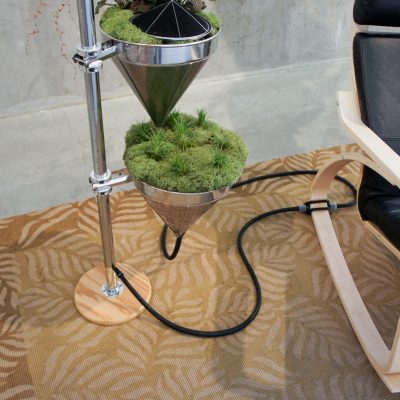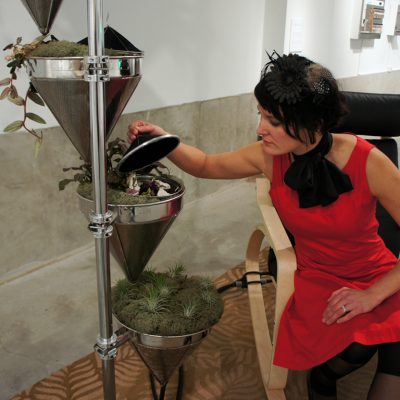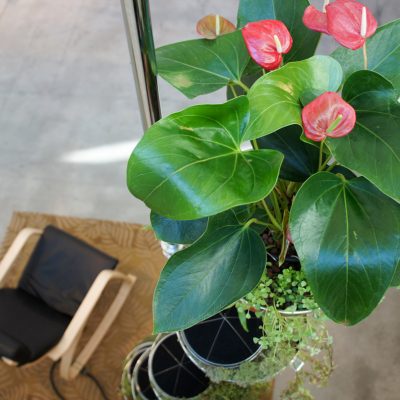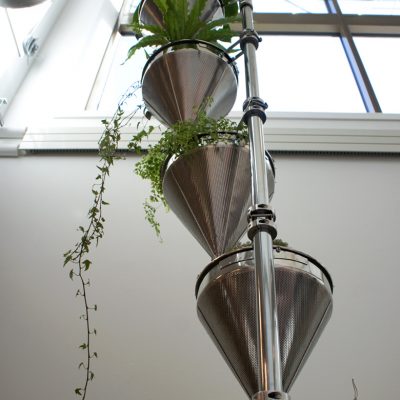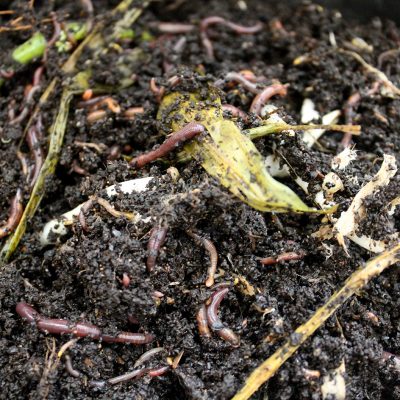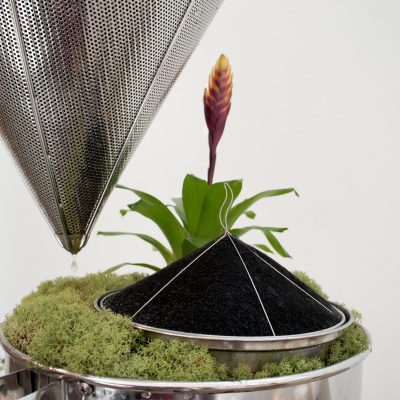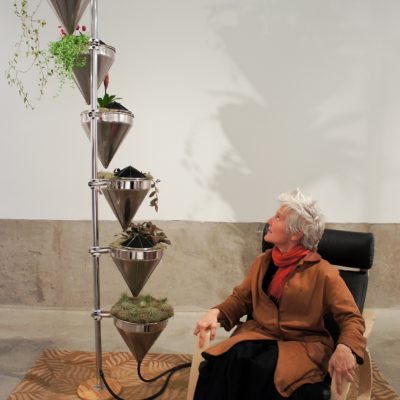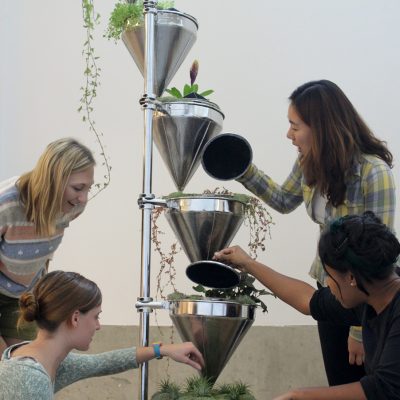The plants, worms and bacteria living in this sculpture rely on each other and on human participation. They are fed entirely on waste generated by us: coffee grounds and veggie scraps from our kitchen, old newspapers and shredded junk mail from our offices, and carbon dioxide from our breath. They are watered by our rocking leisurely in the chair, which mechanically pushes water up to the top of the ecosystem and causes it to circulate through each part; delivering to the plant roots aerated water that has been fertilized by the worms living in the stream.
Partnering with living ecosystems benefits humans too, as the plants provide cleansed air and the worms provide local waste disposal services. Worm composting keeps waste out of the landfill, saving us from generating more greenhouse gas. Methane is a greenhouse gas that is produced by rotting food, even inside of traditional, outdoor compost bins. Worm composting does not produce methane and it does not create odors. Breathe easy, and invite them into your home.
Special thanks to Joan Leonard and Ken Rinaldo advice on this project. More photos on Flickr.
